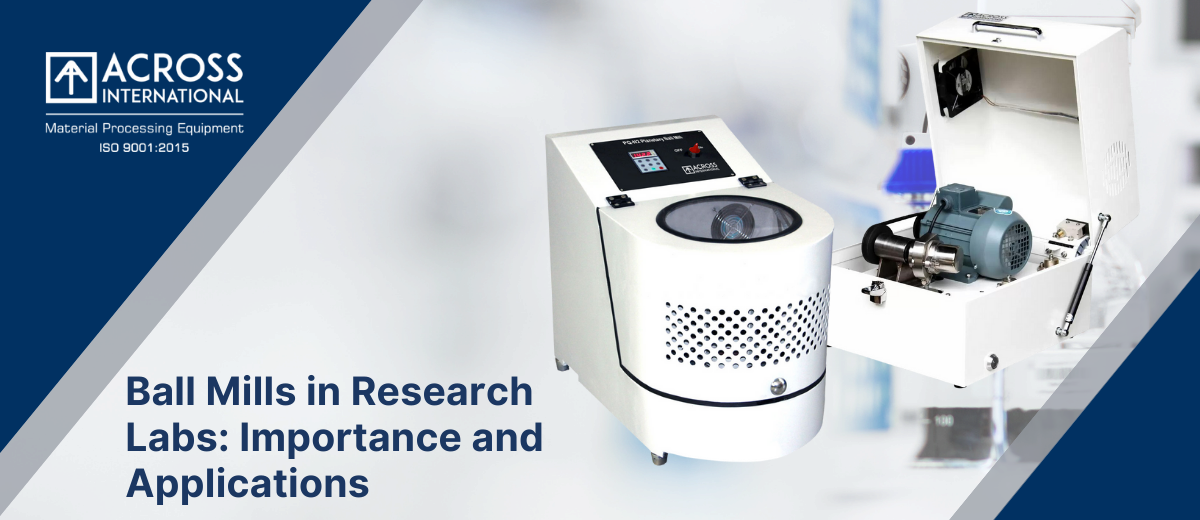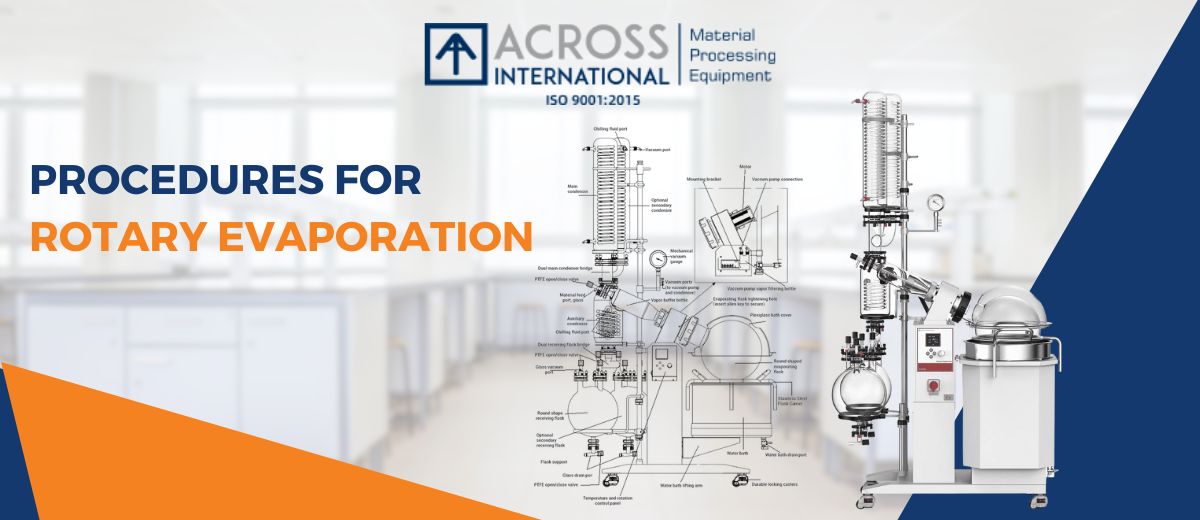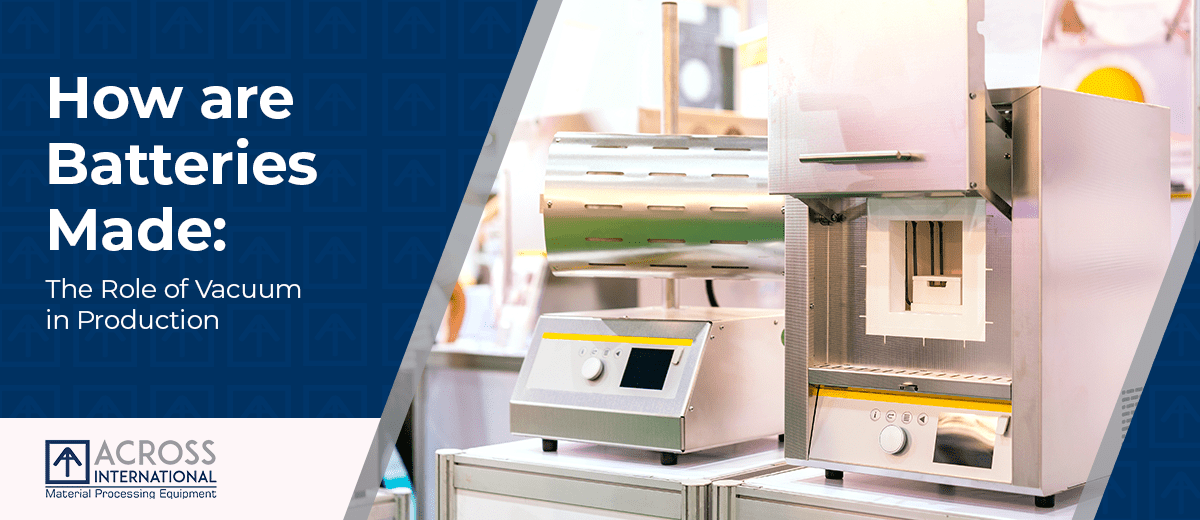We use cookies to make your experience better. To comply with the new e-Privacy directive, we need to ask for your consent to set the cookies. Learn more.
Ball Mills in research Labs: Importance and Applications

Ball Mills in research Labs: Importance and Applications
Ball mills are a type of grinding machine used to grind and blend materials for use in various industries, including the chemical, pharmaceutical, and mineral processing industries. They operate by rotating a hollow cylinder around its horizontal or vertical axis, with the material to be ground added to the cylinder along with grinding media such as steel balls. The grinding media collide with the material and grind it to a fine powder or slurry. Ball mills come in various sizes and configurations, including batch and continuous designs, and can be used for wet or dry grinding. They are versatile machines that can be used for a wide range of applications, from grinding raw materials to the production of nanoparticles.
Why is the Ball Mill important in research labs?
- Ball mills are essential equipment in research labs for several reasons:
- Grinding and mixing: Ball mills are used for grinding and mixing chemicals and other materials to create homogenous mixtures. They are critical in preparing samples for analysis and experimentation.
- Particle size reduction: Ball mills are used for particle size reduction, where larger particles are ground down to smaller sizes. This reduction in particle size is essential for the preparation of many chemical compounds and materials.
- Material synthesis: Ball mills can be used to synthesize new materials by mechanically grinding materials together, allowing for the creation of new compounds that may not be achievable through traditional synthetic methods.
- Testing and analysis: Ball mills are used for testing and analyzing chemical samples and compounds. The homogenous mixtures created by ball mills allow for accurate and precise analysis and testing of chemical properties.
Overall, ball mills are important tools in research labs as they facilitate the preparation, analysis, and testing of various chemical compounds and materials.
Types of Ball Mills
Horizontal Ball Mills:
Horizontal ball mills are the most common type of ball mill. The rotating drum lies horizontally on its side and contains many balls. The material to be ground is fed into the drum and is gradually ground by the movement of the balls. The grinding process is more efficient and uniform than with other types of ball mills, making it ideal for large-scale operations. Horizontal ball mills are often used for fine powders and pigments.
Vertical Ball Mills:
Vertical ball mills are like horizontal ball mills in that they also contain a rotating drum filled with grinding media. However, the drum is positioned vertically, allowing for a more efficient grinding process. Vertical ball mills are ideal for grinding and dispersing pigments, dyes, and other materials that require a finer texture.
Industrial Ball Mills:
Industrial ball mills are larger and more powerful versions of horizontal and vertical ball mills. They are used for large-scale production and can process massive quantities of material. Industrial ball mills are typically used in the chemical, cement, mining, and pharmaceutical industries. For example, industrial ball mills are used to grind coal for power generation, to grind limestone for cement production, and to grind ores for metal recovery.
Planetary ball mills are a type of vertical ball mill in which the jars are arranged eccentrically on the sun wheel. The jars rotate around their own axis and in the opposite direction around the sun wheel, creating high energy impacts between the balls and the sample material. Planetary ball mills are ideal for small-scale applications and are often used in nanotechnology, materials science, and pharmaceuticals. For example, planetary ball mills are used to produce nanoparticles for drug delivery applications and to grind materials to an exceptionally fine powder for use in coatings and paints.
High Energy Ball Mills can be classified as a type of planetary ball mill, as they share many of the same design characteristics, including rotating jars that revolve around a central axis. However, High Energy Ball Mills are distinct in their high kinetic energy and greater number of impacts per minute, which make them particularly suited for the synthesis of materials with complex chemical and physical properties, such as metallic glasses and nanocrystalline materials.
High energy ball mills are a type of ball mill that utilizes high amounts of energy to create a fine powder. This type of mill is used for grinding and blending materials in numerous industries, including cement, mining, and ceramics. High energy ball mills are distinguished by their ability to accommodate samples with high viscosity, brittle materials, and those that are difficult to grind using other conventional ball mills. For example, SPEX SamplePrep's 8000M Mixer/Mill is a high energy ball mill that is designed for efficient sample preparation, including grinding, homogenizing, and mixing of up to 20 mL of sample. It has a unique clamping mechanism that allows cylindrical vials from 3 to 19 mm in diameter and up to 50 mL in volume.
Applications in Research labs
Ball mills have various applications in research labs, ranging from mixing and homogenizing to grinding and milling. They are also utilized for mechanical alloying, cell disruption, small volume high-tech material production, and colloidal grinding. The versatility of ball mills makes them a popular choice for researchers and scientists in the chemical industry. In this article, we will explore the different applications of ball mills in more detail, providing examples and explanations for each.
Mixing and homogenizing: Ball mills are commonly used to mix and homogenize powders and liquid materials. For example, in the preparation of emulsions and suspensions, ball mills can effectively disperse and mix the components uniformly.
Grinding and milling: Ball mills are used for grinding and milling solid materials to reduce particle size. They are commonly used in the preparation of fine powders in industries such as cement, ceramics, and pharmaceuticals.
Mechanical alloying: Ball mills can be used for mechanical alloying to produce new alloys and composite materials. This process involves repeated cold welding, fracturing, and re-welding of powder particles, leading to the formation of a homogeneous mixture.
Cell disruption: Ball mills are used to disrupt cells and release intracellular materials for downstream analysis. This technique is widely used in biotechnology and biochemistry for the isolation of proteins, DNA, and other biomolecules.
Small volume high-tech material production: Ball mills are useful for the production of small volumes of high-tech materials such as nanomaterials and advanced ceramics. These materials require high-energy ball milling to achieve the desired properties.
Colloidal grinding: Ball mills can be used for the preparation of colloidal suspensions. For example, in the preparation of nanoparticles, ball mills are used to grind the precursor materials into a fine powder, which is then dispersed in a liquid medium to form a colloidal suspension.
Features and Advantages
Ball mills are versatile laboratory instruments used extensively in the field of chemistry. They offer various advantages and features that make them an ideal choice for many applications.
- High efficiency and low noise
- Adjustable timer and direction of rotation
- Various sizes and materials of grinding jars and balls
- Leak-proof jars for wet grinding
- Gear-drive for better performance
- Low center of gravity for stability and safety
Mixing and homogenizing: Ball mills are often used for mixing and homogenizing chemical materials. This process involves combining two or more substances to create a uniform mixture. Ball mills achieve this through the action of balls within the mill chamber. As the chamber rotates, the balls fall and cascade over one another, resulting in a mixing action that homogenizes the mixture.
Grinding and milling: Ball mills are commonly used for grinding and milling materials in the chemical industry. This process involves reducing the particle size of a material to create a fine powder or to release the active components of a substance. Ball mills are particularly useful for grinding hard, brittle materials, such as minerals, cement, and ceramics.
Mechanical alloying: Ball mills can also be used for mechanical alloying, a process in which two or more metals are mixed and then ground into a fine powder. This process is used to create alloys with desired properties such as improved strength, ductility, or corrosion resistance.
Cell disruption: Ball mills can be used for cell disruption, a process that involves breaking open cells to extract their contents. This is particularly useful in biotechnology where cells are often used to produce proteins, enzymes, and other biomolecules.
Small volume high-tech material production: Ball mills are ideal for producing small volumes of high-tech materials such as nanoparticles and nanotubes. These materials have unique properties and are used in a wide range of applications, including electronics, biotechnology, and energy.
Colloidal grinding: Ball mills are often used for colloidal grinding, a process in which particles are suspended in a liquid and ground to a fine powder. This process is used to create colloidal suspensions, used in various applications including food production, and ink manufacturing.
In conclusion, ball mills play a crucial role in labs by providing a versatile and efficient tool for various applications such as mixing, grinding, mechanical alloying, and cell disruption. Their ability to produce small volumes of high-tech materials and colloidal grinding make them an essential tool for researchers and scientists in various fields. Furthermore, the advancements in ball mill technology have led to improved performance, efficiency, and safety, making them a reliable tool for research and development in various industries.
In the future, we can expect further advancements in ball mill technology, such as the development of more efficient and precise control systems, automation, and the integration of AI technology to optimize and improve ball mill operations. Additionally, the use of sustainable and eco-friendly materials in ball mills can lead to more sustainable research practices and help address environmental concerns. Overall, ball mills have proven to be a valuable tool in the field of chemistry and will continue to play an essential role in research and development for years to come.
For more information on our selection of ball mills or to request a quote, our team of experts is ready to assist you in finding the right ball mill for your specific needs. Contact us today to get started.











